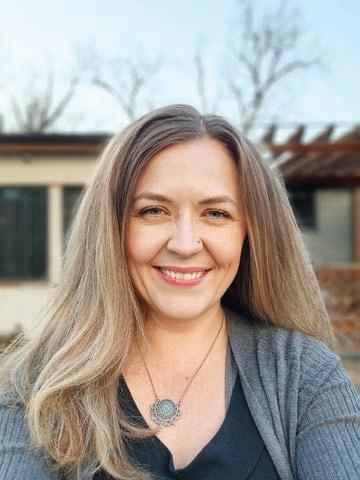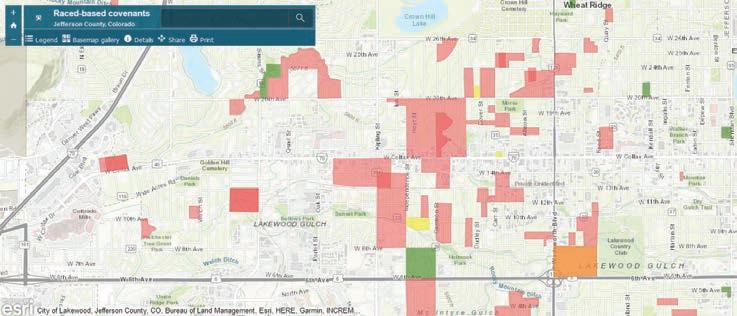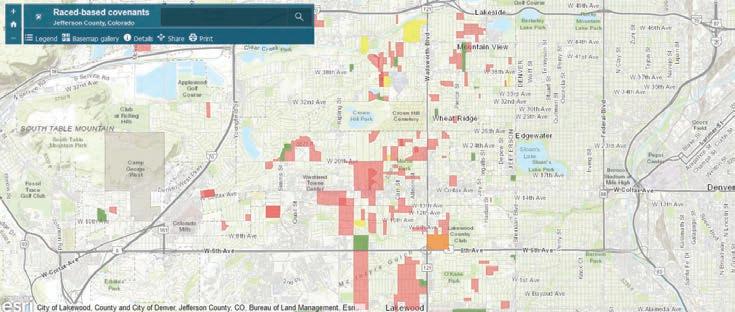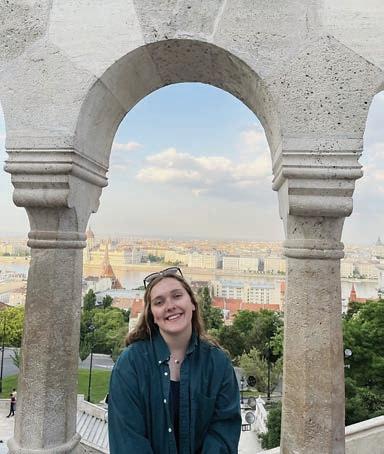
2 minute read
A New Vision
American dream changing for some Coloradans
BY CHRISTY STEADMAN CSTEADMAN@COLORADOCOMMUNITYMEDIA.COM
Amber Carlson is a Colorado native. She loves the Denver area for all its amenities — from outdoor recreation to the arts-and-culture scene. But with so many other people moving to the region because they also love those things, Carlson would consider moving away.
“I don’t blame people for wanting to live here,” she said. “It’s got a lot going on.”
Carlson doesn’t want to uproot from Colorado, but if she did, it would be because of the region’s skyrocketing cost of living.
“It’s di cult when you’ve lived here your whole life and it has become hard to stay,” she said.
Carlson is in her 30s. She went to Denver’s George Washington High School and is currently in graduate school at the University of ColoradoBoulder. She lives with her partner in a house in Wheat Ridge that he owns, a situation she feels fortunate to have. Otherwise, Carlson said, she is not sure if she would be able to a ord a rental on her own.
Her experience leaves her with questions about the idea of the American dream — owning a home.

It is, for many, a dream of a single-


Map experts dig for roots of racial separation in metro Denver


BY ELLIS ARNOLD EARNOLD@COLORADOCOMMUNITYMEDIA.COM
In 1967, Black Americans were mired in “the long, hot summer.” Frustrations over poverty, unemployment, discrimination and myriad other issues spilled into the streets, leading to clashes with police and arrests in many places, including Denver. e widespread tensions over race left President Lyndon B. Johnson searching for answers.
So, he issued an executive order for a report that would detail what caused the chaos. He wanted it to answer a crucial question: How can the country prevent more unrest in the future?
When the report arrived seven months later, it laid out hundreds of pages of analysis and recommendations for improving race relations in America.
But its message was best summed up in a sentence:
“To continue present policies is to make permanent the division of our country into two societies: one, largely Negro and poor, located in
Amber Carlson, a graduate student at the University of Colorado-Boulder, is pictured in front of her partner’s home in Wheat Ridge. Because her partner owns the home, Carlson is able to a ord rent in the metro area as she completes her studies.
COURTESY PHOTOS family home on a private plot of land in the suburbs, maybe with a picket fence and tire swing hanging from a lofty tree.
But younger people are changing their perceptions about what the American dream should be. Driving that change is the increasingly una ordable nature of housing, according to a few surveys, including one by Bankrate last year. It found that two-thirds of respondents cite a ordability as a major hurdle to homeownership. eir pinch points included everything from salaries that didn’t keep up to a lack of ability to save for down payments to high mortgage rates.
One of the reasons that University of Denver student Caitlyn Aldersea doesn’t envision herself ever becoming a homeowner is because she wants to be able to travel. Here, she is pictured during her Spring 2022 travels to Budapest, Hungary. She has also spent time studying abroad in Amman, Jordan, and the UK.








